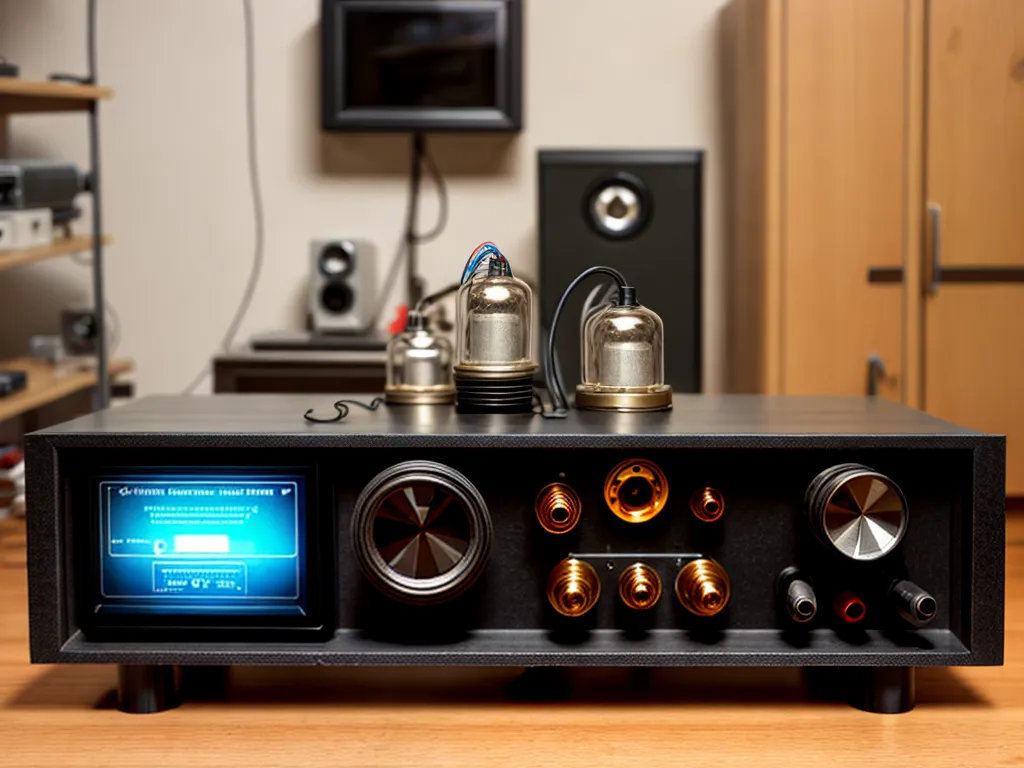
How to Use Obsolete Vacuum Tubes for DIY Home Automation
Introduction
Vacuum tubes were once integral components of electronics and computing, but with the advent of smaller and more efficient transistors, their use has declined significantly. However, creative hobbyists and tinkerers have found new life for these obsolete tubes by repurposing them for fun and unique DIY projects like home automation. In this guide, I'll walk through the basics of vacuum tube technology and how to leverage their quirks to add retro flair to your smart home projects.
The Appeal of Vacuum Tubes
So why would anyone want to mess around with antiquated vacuum tube technology in this day and age? Here are a few key reasons:
-
Nostalgia and retro aesthetics: The warm glow and unique look of vacuum tubes can lend a cool vintage vibe to projects. This makes them popular for steampunk or mid-century modern styles.
-
Interesting audio properties: Certain vacuum tubes impart a warm, rounded sound profile when used in audio applications. This makes them desirable for guitar amps and hi-fi equipment.
-
High voltage/current abilities: Vacuum tubes can withstand and control higher voltages and currents than transistors in some situations. This makes them useful for specialized applications.
-
Tinkering and learning: Working with vacuum tube circuits provides insight into the early days of electronics. It's a great way for hobbyists to learn about the field's history.
So in summary, while not always practical, vacuum tubes offer novelty, nostalgia and unique technical capabilities for enterprising maker projects.
Key Components and How They Work
To tap into the potential of vacuum tubes for home automation duties, it helps to understand what they are and how they work at a basic level:
-
Vacuum chamber: The tube encloses a vacuum or partial vacuum inside a glass, ceramic or metal envelope. This allows electrons to flow freely.
-
Cathodes: These are the source of electrons via a heated filament or other mechanism. Thermionic emission ejects electrons into the vacuum.
-
Control grid: A mesh wire grid that surrounds the cathode. Applying a voltage here controls electron flow to the anode. This enables amplification and switching.
-
Anode (plate): The positive electrode that collects electrons from the cathode. A power source creates a high voltage between the cathode and anode.
-
Output terminals: Wires connect the tube's internal elements to external components like transformers, resistors and capacitors in the circuit.
So in essence, vacuum tubes regulate current flow via thermionic emission. The voltage applied to the control grid manages the passing of electrons from cathode to anode, enabling both amplification and on/off switching capabilities.
Useful Vacuum Tube Types
Many different tube designs exist, but here are three common varieties that are handy for home automation:
-
Triodes: The most basic 3-element tube with a cathode, grid and anode. Good for amplifying signals and switching small loads on/off. Examples: 12AX7, 6SN7.
-
Pentodes: Contain an extra "screen" grid for more efficient current regulation. Allows bigger power capabilities. Examples: EL34, 6L6.
-
Thyratrons: Filled with gas to conduct in one direction only. This makes them work well for triggering actions in timing circuits. Example: 2D21.
For DIY home automation, triodes and pentodes are the most straightforward to utilize for small switching and control circuits. Thyratrons require specialized knowledge but can enable unique timing functions.
Project Ideas
Here are just a few project ideas that showcase fun and creative ways to incorporate vacuum tubes into home automation contraptions:
-
Retro analog logic: Build simple logic gate circuits with tubes to perform operations like AND, OR, NAND for controlling devices. Neon bulbs provide visual logic outputs.
-
Vacuum tube timers: Use thyratrons configured as "one shot" monostable multivibrators to create unique decorative timers for lighting automation.
-
Vintage sci-fi controls: Make a mockup of a 1950s computer console with authenticate toggles, buttons and tube indicators to control room ambiance.
-
Tube preamp for audio: Boost your smart home's vintage audio system with a tube-based microphone preamplifier for voice control input.
-
Nixie clock/display: Illuminate DIY Nixie number tubes with vintage charm to display time, temperature or other metrics.
The possibilities are endless for innovative hobbyists looking to merge classic technology with modern smart home conveniences.
Key Circuit Design Tips
When working with vacuum tube circuits, adhering to a few fundamental design principles will help ensure proper functionality and safety:
-
Provide adequate filament/cathode heating with a low voltage transformer. This enables electron emission.
-
Use a high voltage power supply in the range of 100V-500V for the anode/plate. This attracts electrons.
-
Include grid leak resistors in the megohm range to prevent excessive grid current.
-
Add coupling capacitors in the signal chain to block DC and allow AC to pass.
-
Incorporate load resistors to properly match impedances and prevent shorts.
-
Limit heater-to-cathode voltages to reduce hum and noise.
-
Wire tubes into sockets for easy replacement. Multiple pin types exist.
-
Allow tubes to properly warm up before operating to maximize electron emission.
Adhering to tried and true design principles like these will help in constructing vacuum tube circuits that work reliably. Just be extremely cautious when working with the high voltages involved!
Conclusion
With their warm glow and retro pedigree, vacuum tubes offer an avenue to add vintage sci-fi charm to modern smart home projects. By learning basic tube operation and following solid circuit design principles, creative makers can build unique automation and control solutions not possible with modern solid state devices alone. The added nostalgia and craftsmanship involved in working with antiquated technology is also half the fun. With some imagination and attention to safety, vacuum tubes can bring an added dimension of novelty to home automation that embraces the old to enhance the new.